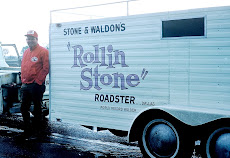

It's been a long time coming,...so excuse me
while I enjoy this win.. Kevin Harvick executed the perfect last- lap pass on Sunday to win the Aaron's 499 NASCAR race at Talladega, Alabama.. The win snapped a streak of 114 races since Harvick has won a points race in the NASCAR Sprint Cup Series. It was the longest Talladega race in history as the new three attempts at a green, white, checkered finished was imposed. Sundays race went 12 laps past the 188 scheduled lap race as wrecks and caution flags delayed the finish. Ironically, it was this same rule that cost Harvick the Daytona 500 earlier this year. That day his car would not come up to speed fast enough after a late caution flag and he finished third. Yesterday the 2007 Daytona 500 winner ran most of the race in the rear of the pack, but with 60 laps to go he made his way to the front. With 5 laps to go he was pushing leader Jamie McMurry to the head of the pack. On the final turn Harvick used the sling-shot move to push his way past McMurry, who would finish second. The margin of victory was 0.011 seconds,..or half a front fender. This was the conclusion of a week that saw his primary sponser, Shell Pennzoil, announce they would be leaving at the end of this season to go over to Penske Racing Team in 2011. Shell Pennzoil was on Harvick's car for the first time when he won the Daytona 500 in 2007. It was the first Talladega win for car owner Richard Childress since 2000 when Dale Earnhardt won. It would be the final win of the Intimidator's career. The Sprint Cup regulars move on to Richmond for next weeks Saturday night race under the lights.

















































